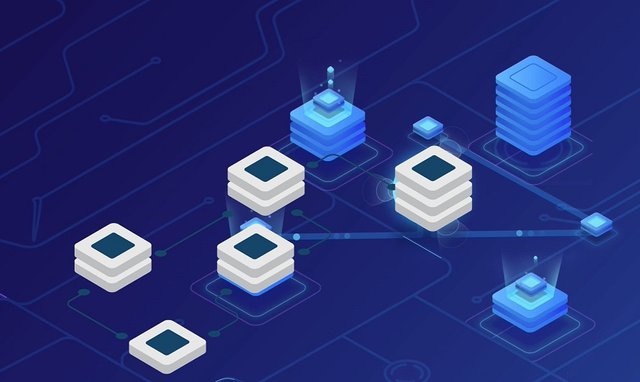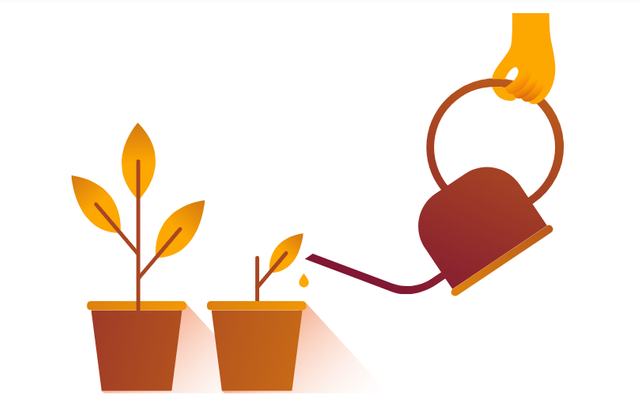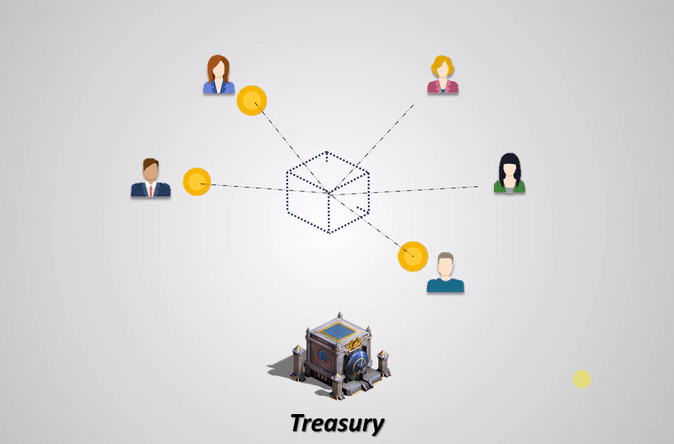🔰 What cardano is trying to achieve - lets know here ? 👈😏
Hi, Everybody 👋

We are back again with a very interesting article. As we all have seen, as of now there are countless cryptocurrencies out there in the market to invest in but, out of many, there are only a few that will actually survive in the long run. One such long-race horse in the cryptocurrency game is the Cardano platform which was officially launched roughly 11 months back from now although the initial idea emerged back in 2015 and since then it's been under constant development. Cardano claim itself to be the 3rd generation of cryptocurrency solving many issues with previous two generations with Bitcoin and Ethereum being the 1st and 2nd generation respectively.

🔶 1st generation (Bitcoin) - only allowed transfer of value from one user to another without the need of any intermediary. It was like an answer to the question - Can we transfer value/money in a decentralized manner without the need of any intermediary? Bitcoin(Turing incomplete) proved that we can indeed.
🔶 2nd generation (Ethereum) - It allowed programmable transaction on the blockchain. By programmable, we mean transactions controlled by programmable code (code defined the condition for a transaction to happen). It was like an answer to the question - Can we decentralized computation (running code on the blockchain) or build DAPPs on the blockchain? Ethereum (Turing complete) proved that we can indeed.
🔶 3rd generation (Cardano) - this generation solves issues with the above two generations like scalability, governance, security, interoperability. It was like an answer to the question - Can we achieve all the functionalities of 1st and 2nd generation combined in a secure, scalable and flexible way. Cardano may be the answer to this question.
In terms of market cap, Cardano ranks 9 and this indicates that many people are already invested in Cardano, so we thought it would be a great idea to cover this project in brief just to give you guys a clear overview of what the project is trying to achieve in the long run. There are many unique and interesting aspects of this project which we will try to cover in this article. So let's get started friend, shall we? 😉

One of the first and most interesting feature of Cardano project is that it is built around peer-reviewed papers, which means that the team instead of just preparing a whitepaper and implementing the concept directly to code they let the whitepaper to be reviewed by experts from around the world so that they all can reach mutual consensus and agree upon common design approaches before implementing any of the code. This is a very unique way of working and opens the door for the adoption of best engineering practices and avenues for exploration.
From ground up, Cardano is designed to be flexible and thus it takes a modular approach in implementation of its core components and the most notable being the separation of the Accounting and Computation into 2 separate layers . As per Cardano, they have borrowed this idea of separation of concerns from the TCP/IP protocol.

🔷 CARDANO SETTLEMENT LAYER - This layer is the accounting layer which is responsible for handling cryptocurrency transactions for more specifically ADA transactions, ADA being the native currency in here. In short, this is the value layer which manages the balance ledger.
🔷 CARDANO COMPUTATION LAYER - This is the computational layer which is responsible for running computations in the form of smart contracts . In short, it is the smart contracts layer on which DAAPs will run.
The reason why Cardano project exist are various issues with the previous two generation of blockchains and the most prominent being as discussed below 👇😄

Speaking of this there are two type of interoperability current cryptocurrencies are facing

🔷 Interoperability with legacy financial systems
The root cause of this issue lies in the fact that financial systems like banks and other institutions as of now don't trust any transactions in the cryptocurrency world because these currencies don't adhere to the rules and norms of these legacy financial systems which demands complete transparency of any transaction like which parties are involved in a transaction, the conditions of the transaction apart from the amount involved in the transaction. But this kind of information is very sensitive and cannot be handed directly to anyone. To address this problem Cardano team has come up with an in-between solution, where users can now attach optional metadata to a transaction. This way both the user and financial institutions have more flexibility than ever before.
🔷 Interoperability with other cryptocurrencies
This root cause of this issue lies in the fact that each cryptocurrency is different in the way they work, communicate or reach consensus. This leads to the problem that one cannot directly transfer value between two blockchains without the involvement of a third party intermediary. In simple terms you cannot transform you Bitcoin or Litecoin into some other currency say Ether without going through an exchange. To solve this problem Cardano aims to integrate a new sidechain protocol which will provide a safe and non-interactive way of transferring value between two blockchains.
Cardano thus aims to be the internet of Blockchains by seamlessly moving asset across multiple chains.


Scalability is the next big issue that the Cardano team is trying to solve. The problem with most of the current blockchains is that they work perfect on paper but in practice, they are clogged with scalability issue and are not being able to cope up with the volume of real-world transactions. This is where the legacy system beats current blockchains solutions. If we dig further we will find that scalability itself consists of 3 emerge out of the below factors 👇😄


This is the most prominent one. For a cryptocurrency to be adopted globally it must have a high throughput that is to say it must be able to handle a lot of transactions per second. As you may all know that most of the currencies out there are based on POW(proof of work consensus) which requires every node in the network to mine blocks without any additional performance benefit for adding the node(resource) to the network. In terms of resources used, this is a very inefficient way of processing transactions and thus we don't gain any gain in TPS by adding more nodes to the network as each node is basically doing the same task - trying to mine the same block of transactions based on how much computing power these nodes have.
Cardano has adopted a new consensus mechanism for mining blocks of transactions known as POS(Proof of Stake) or more specifically Delegated Proof of Stake. In this mechanism, not every node in the network tries to or allowed to mine a new block, but the network randomly elects a few nodes based on the stake of the nodes to mine new blocks. These nodes are called slot leaders. The working of the model is as below -

🔷 Cardano divides the time into EPOCHs, and each EPOCH is then divided into a small period of time known as slots. A Slot is the time in which one new block is mined.
🔷 Each slot is then allocated a slot leader by the network who is responsible to mine the new block In case the slot leader fails to do his/her task backup slot leaders do the job and the current slot leader has to wait until he/she is reelected by the network.
As you can see in this mechanism nodes don't try to compete with one another thus is more efficient that POW in terms of resouces. The DPOS consensus mechanism used by Cardano id called Ouroboros. Cardano can easily scale by
🔹 Increasing the no. of SLOTs in an EPOCH
🔹 Running multiple EPOCHs in parallel to handle more transactions per second by partitioning the transactions between multiple quorums.

As you may know Blockchains are stored in a peer-to-peer network, take Bitcoin for example, each node in the network contantly receives a new copy of all the new transactions. This is where the main problem shows up. As the no. of transaction increases the pressure on each node to continuosly download all the new transactions increases and this require a lot of network bandwidth which as you can see is not very scalable.
Cardano is trying to tackle this problem by spliting the whole network into small subnetworks by implementing an aritecture called RINA (Recusive Internetwork Architecture). In here each node will be part of a subnetwork and can communicate with other subnetworks.This way every node doesn't require to download every new transaction and thus the bandwidth load of each node will reduce significantly.

Cardano also want to solve the ever increasing data storage problem by implementing techniques like data compression, pruning and partioning though it is not the top priority issues at the moment.


There are a lot ICOs coming up these days raising a lot capital for their business. But what most of us don't realize is that many of these ICO don't have a proper sustainability model and are doomed to fail. By sustainability I mean, no matter how much money an ICO is raising, eventually all the money will dry up at some point in time in the future. What will they do then? How will they continue running their business or project development? These are the most important issues at this moment as raising money once is just not a sustainable model for long term. In order to solve these problems, Cardano project has come up with an idea of implementing a Tressury.
The Treasury is a special wallet that will receive a small portion of every transaction that ever happens on the network. The interesting part of the treasury is that it is not controlled by any single entity but functions on a fair voting system run by smart contracts to allocate funds depending on the current necessity of the project. Anyone can submit a proposal to develop the Cardano protocol and based on what the network considers the most important, developers are released funds to continue with the development of the project. Cardano borrows this idea from Dash which too implements a Treasury model to remain sustainable. Thus the treasury model will ensure the Cardano project never runs out of funds in the future. This is a very important step in the development of a global cryptocurrency.
As you can see that that the Cardano project is very ambitious. But at the same time, they are trying to tackle several problems single handedly which is challenging on its own. But the project is in its early stage of developement and only time will tell if it succeeds. With this, we are wrapping up this article as we have already extended the article too much and as always, Thanks for reading.😉

This article was written by @pankajborah and @flamingirl.

If you liked reading this article, feel free to FOLLOW US, UPVOTE and RESTEEM! It's always appreciated =D. Thank you all for your support and see you soon for a new flamingirl's adventures!


I do like the interoperability and you're right they're tackling some problems single handedly. The truth is no matter how good a smart contract platform is, it needs projects to back up bold statements. It's like a new games console comes out and claims to have the best specs ever but the games released on it aren't really showing anything groundbreaking.
Good summary of what Cardano is.
To complement your post, the only wallet that is available to store ADA is Daedalus, but they recently release Icarius which is a lightweight implementation of Daedalus, which will run as a chrome extension.
Another very important thing to mention is that so far Cardano is centralized. They will be working on with different staking pools now during the autumn to implement the decentralization features in Shelley. For more info check out the cardano roadmap
@pankajborah, @flamingirl - 1st generation (BTC) still most trusted & will be always, don't you think? Cardano has long way to go :)
Yes, @daljeetmyd, Bitcoin is most trustable at the moment, but with POW it is not that scalable and efficient in terms of power and hardware. So we will be needing an optimised solution if we want crypto to go mainstream. Offcourse Bitcoin ain't going anywhere, and although I am not a fortune teller but in future, I think people will be using it more like a store of value(because of its security) rather than using it as a transfer of value(transactional purposes as that would not be efficient as I have said)
@pankajborah - agreed.
Cardano reminds me on steem in a lot of different points: scalability, DPOS, Speed,
i think the Treasury is a pretty good idea. Somehow we have that here on steem too, because really good projects often get noticed well and deserve their money.
A lot of my friends talk about Cardano but I have never really looked into it before. This post was very educational and I like how their blockchain is aiming to solve scalability issues.
Coins mentioned in post:
Yes u really think ada is the real competition to etheruem
Blog-Thumbs up!

Please check this if you like
https://steemit.com/gut/@saba-imran/gut-bacteria-treatment-for-diabetes
Profitable crypto currency, Very useful information.
Do you invest in Cardano project?